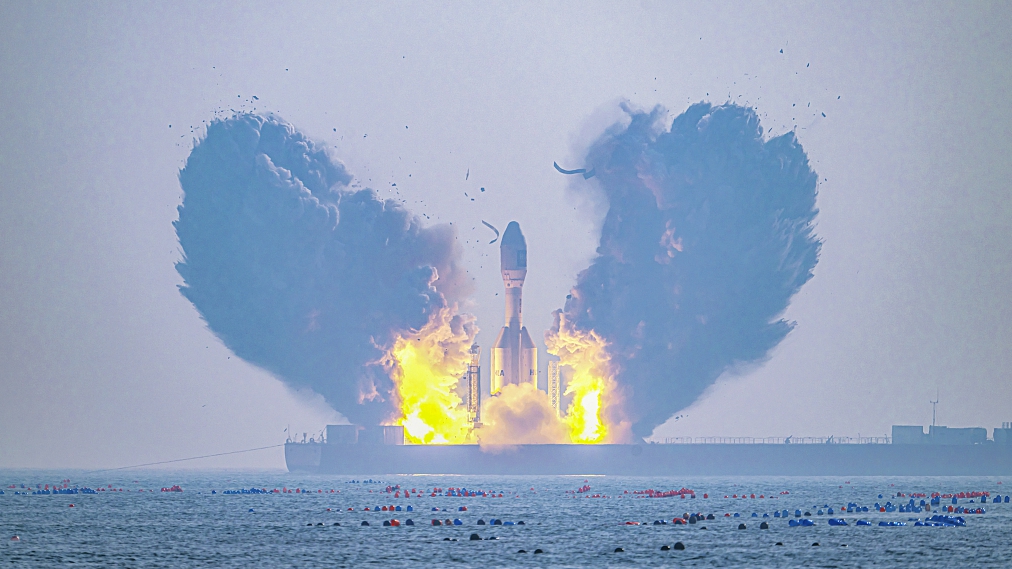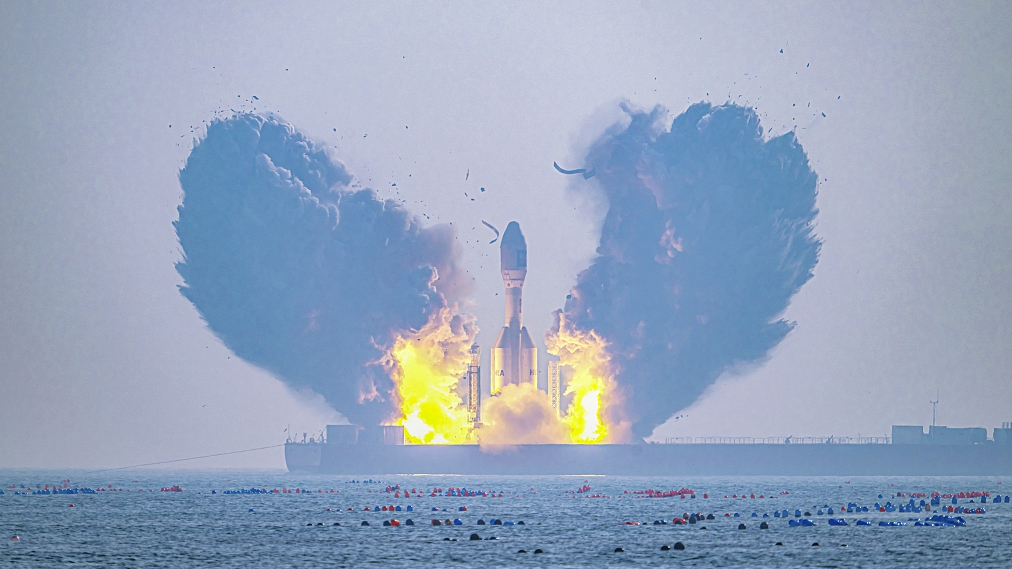 China launches its Gravity-1 solid rocket from a mobile sea platform off Haiyang City, east China’s Shandong Province, January 11, 2024. /CFP
China launches its Gravity-1 solid rocket from a mobile sea platform off Haiyang City, east China’s Shandong Province, January 11, 2024. /CFP
China launches its Gravity-1 solid rocket from a mobile sea platform off Haiyang City, east China’s Shandong Province, January 11, 2024. /CFP
China announced on its Space Day (April 24) that the Shenzhou-18 crewed spaceship will be launched on Thursday, and the country is projected to make about 100 space launch missions in 2024, setting a new record in its space history.
Starting in 2016, China chose April 24 as its Space Day to mark the launch of its first satellite Dongfanghong-1 into space on April 24, 1970. The country carried out 67 space launch missions last year, ranking second in the world after the U.S., and put 221 spacecraft into space, and it is striving to make about 100 space launch missions this year.
The launches include the maiden flight from China’s first commercial spacecraft launch site, which is now under construction in the city of Wenchang, in south China’s island province of Hainan, in addition to more satellite lift-offs to form constellations.
The China Aerospace Science and Technology Corporation (CASC), the country’s rocket series developer and the leading force of the country’s space industry, is scheduled to make nearly 70 space launch missions, putting over 290 spacecraft into space in 2024.
It will implement the first flight tasks of Long March-12, and complete two cargo spaceship missions, two crewed launch missions, and two crewed return missions for China’s space station. The Long March-12 is China’s first single-core stage liquid launch vehicle with a diameter of 3.8 meters. It has a two-stage configuration propelled by six liquid oxygen/kerosene engines.
The new rocket is designed with a carrying capacity of not less than 10 tonnes in near-Earth orbit and not less than 6 tonnes in 700-km sun-synchronous orbit, which will improve the country’s transport capability in low-orbit satellite constellations and sun-synchronous orbit. The Long March-12 will be launched in the country’s first commercial spacecraft launch site.
In the first half of this year, China launched Queqiao-2, a relay satellite for communications between the far side of the moon and Earth, and it is scheduled to launch the Chang’e-6 lunar probe, a mission to collect samples from the far side of the moon, the first of its kind in human history.
In 2024, the CASC strives to continuously promote the development of more than 200 spacecraft, including the new-generation near-Earth manned spacecraft, the Chang’e-7 lunar probe, the Tianwen-2 probe for asteroid sampling and the geostationary microwave probe satellite.
Scientific instruments from France, Italy and the European Space Agency/Sweden will be onboard the lander of the Chang’e-6 mission, with a Pakistani payload on the orbiter, according to the China National Space Administration. A detection satellite for ocean salinity, an electromagnetic monitoring satellite and an astronomical probe co-developed by China and France are also on CASC’s task list.
New partners for International Lunar Research Station
On this year’s Space Day, the China National Space Administration (CNSA) also declared that more partners, including one country and two international organizations, will participate in the construction and operation of the International Lunar Research Station (ILRS).
The latest progress on the ILRS program, which was initiated by China, was revealed at the launch ceremony of the Space Day of China in Wuhan, central China’s Hubei Province.
The new partners of the ILRS include Nicaragua, the Asia-Pacific Space Cooperation Organization and the Arab Union for Astronomy and Space Sciences. China will collaborate with these three parties on various issues concerning the ILRS, including its demonstration, engineering implementation, operation and application, according to the CNSA.
The officials at the CNSA have signed agreements and memorandums of understanding on the cooperation on the ILRS with relevant officials from the three sides.
The building of the International Lunar Research Station will be carried out in three phases, with a basic model of the station expected to be completed by around 2030.
According to the CNSA, the research station will operate autonomously for a long period of time, with short-term human participation.
Read More:
Exploring China Opportunities: China Space Station empowers aerospace industry of over $100 billion
(With input from Xinhua)
